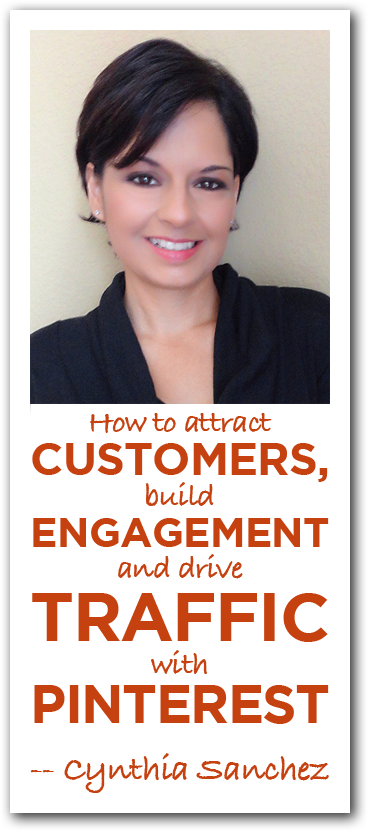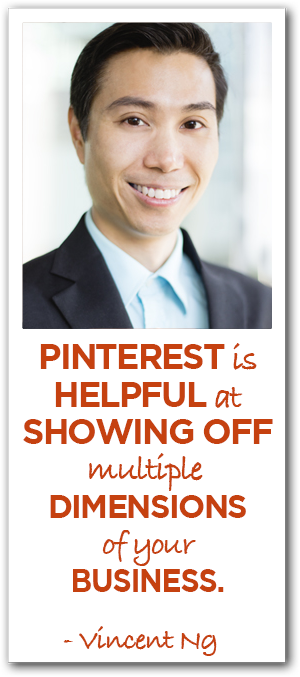 Pinterest is the 2nd biggest driver of social traffic, and it’s users are more likely to buy and to spend more money per transaction.
Pinterest is the 2nd biggest driver of social traffic, and it’s users are more likely to buy and to spend more money per transaction.
Even if you’re not selling product from your website, Pinterest’s interests continue to expand, with plenty of service, marketing, and B2B companies joining the channel.
But maybe you’ve been hesitant to get involved. “Not another social media site,” you think. Or maybe you just don’t understand the landscape and how to get started. Or you feel that your business wouldn’t be a good fit for Pinterest because of your target audience.
In this week’s episode we have Cynthia Sanchez of Oh So Pinteresting who is going to share with us how any business can get started and build a following on Pinterest. She’s got some sound advice for beginners and some expert tips for those of you who are already making use of this powerful channel.
Podcast: Play in new window | Download
Subscribe:
Big Ideas:
- No pinner is an island. Pin (share) other peoples images to become part of the bigger Pinterest community, which increases the chances they’ll pin your content. Lowe’s is a good example. They don’t pin Home Depot’s stuff, but do pin home projects from DIY bloggers.
- Repinning raises your profile. When you repin, the original pinner gets an email, which helps promote your name and brand to them.
- There’s no one size fits all on the time you need to invest. Don’t be too rigid on how much time each day should be included. The more you put into it, the more you get out of it. Spread out your pins, don’t do pinning marathons.
- Create pinnable images. Use tall photos to get your content pinned more often. 300 wide, 450 tall works best for Cynthia. Even if you don’t want to be pinning yourself, creating pinnable images and adding a “pin this” button can help deliver more qualified traffic.
- Search within Pinterest can help drive traffic. While you’re dealing with the stream similar to twitter, it also relies heavily on search. That means you should give your image file names keyword rich names (i.e., grilled-lobster.jpg and not IMG_4523.jpg.) Use hashtags and keywords in your description, too.
- Pinterest can help with search, too. “Google and Pinterest are dating.” Pin boards can rank well in Google searches, so make sure you’re creating boards that focus on your core products and services that you want to rank well for.
- Use Pinterest contests to build your list. New rules limit what you can do. Incentivize your contests with prizes that would only attract your target audience. (Not an iPad, for instance, which would attract everyone, not just your target audience.)
- Be purposeful with your boards. You need to tie your boards into your business. Don’t just throw up a recipes board if it doesn’t fit with your brand.
Juicy Links:
- Tailwind (formerly Pinly): Lots of great information on who’s pinning and sharing your content.
- Canva: A simple graphic design tool for creating pinnable images.
- PicMonkey: Online image editor for creating great, pinnable images.
- Oh So Pinteresting: Cynthia’s blog & podcast about everything Pinterest!
- Cynthia Pins: Cynthia’s boards on Pinterest.
- The Marketing Agents’ Pins: Don’t make fun…we’re just getting started.
- The Marketing Agents Podcast: Subscribe, rate & review. Please take a moment to let me know what we’re doing right and what we can do to improve. Thanks!
Rich Brooks
Amateur Pinner
 What do you know about Pinterest marketing?
What do you know about Pinterest marketing? 